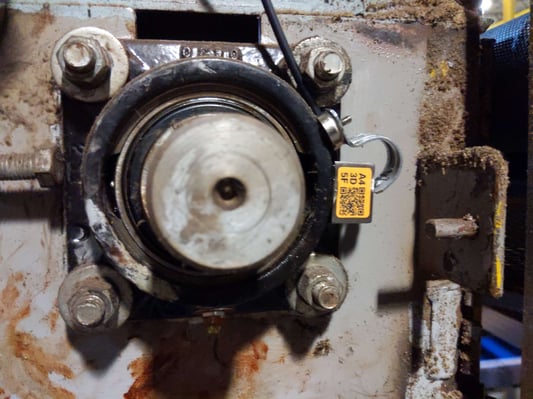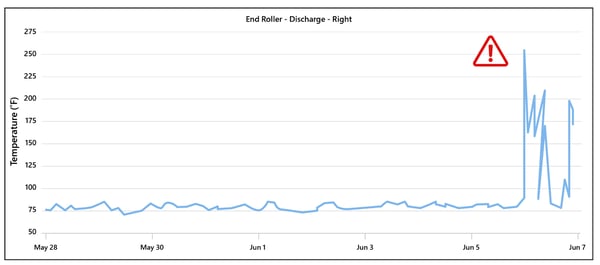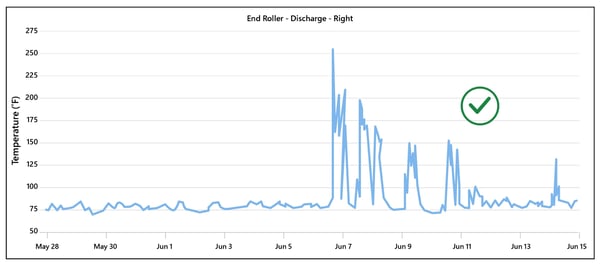CASE STUDY Early Temperature Detection Prevents Conveyor Downtime at Logistics Hub

Conveyor uptime is critical in high-throughput logistics hubs. When one conveyor fails, it can delay every package behind it. At a major distribution facility, Waites' sensors detected unusual temperature spikes on an end roller of a bulk conveyor transfer line. Left unresolved, a malfunction could disrupt operations, delay deliveries, and cause costly production downtime and financial losses.
Waites' analysts noticed a rapid and sustained increase in roller temperature, indicating possible friction issues. The temperature rapidly increased from normal operational levels of around 75°F to a critical 259°F. Initial analysis indicated potential misalignment, belt-tracking issues, or debris accumulation. On-site inspection confirmed the roller had shifted position due to loosened set screws, causing friction against the conveyor frame.

Rapid temperature increase (259°F peak) on the discharge end roller indicated friction issues due to misalignment or mechanical interference, demanding immediate attention.

Following roller realignment and hardware replacement, temperatures promptly returned to normal operating levels (82.3°F), validating the effectiveness of the corrective actions.
The maintenance team acted immediately on Waites’ alert. They discovered the roller was rubbing the conveyor frame due to misaligned hardware. Technicians realigned the roller, secured it with new hardware, and returned the conveyor to full operation. Waites remotely verified that temperatures quickly normalized, confirming successful repairs.